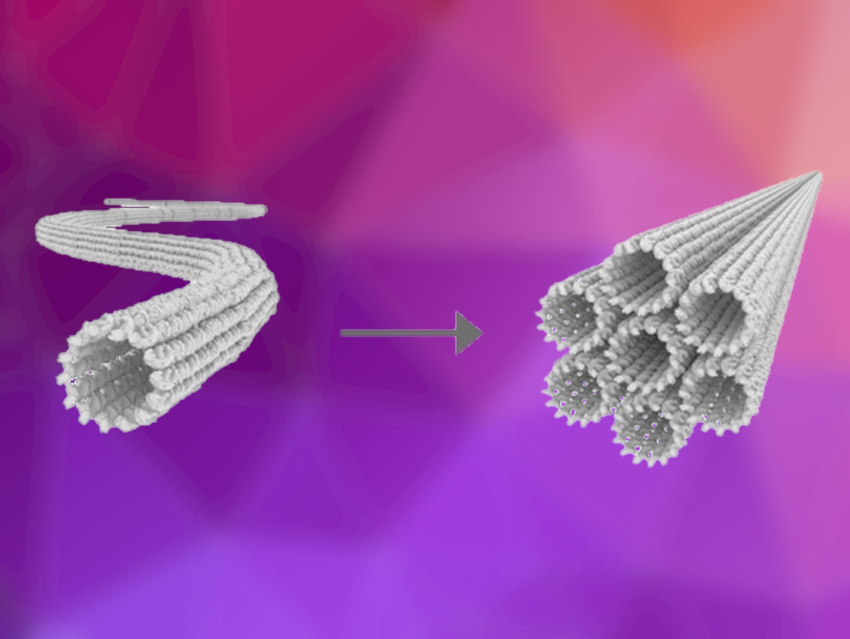DNA can not only encode genetic information but can also be used as a material—in particular, in nanotechnology. DNA strands can, for example, form nanotubes, which can be further functionalized. However, these nanotubes are flexible, which limits their application on a macroscopic scale.
Jonathan R. Burns, University College London, UK, has developed a macromolecular assembly method for condensing flexible DNA nanotubes into rigid fibers. First, nanotubes (pictured on the left) were assembled from subunits comprised of five oligonucleotides each. High concentrations of Mg2+ or Ca2+ were then used to form complexes from multiple nanotubes (pictured on the right) that provide a more rigid fiber structure. In the complexes, the metal ions connect phosphate anions of neighboring nanotubes to form bundles.
Transmission electron microscopy (TEM) showed that the resulting fibers are composed of tightly packed and aligned DNA nanotubes, with diameters of about seven nanotubes. The DNA fibers can be functionalized, e.g., with DNA single‐strand linkers, DNA origami nanostructures, DNA nanoparticles, or liposomes. The fibers can also act as scaffolds for the adhesion of Escherichia coli bacteria. According to Burns, the DNA nanotube condensation approach is efficient, robust, and versatile and could be extended to other DNA nanotube designs and other condensation agents.
- Introducing Bacteria and Synthetic Biomolecules along Engineered DNA Fibers,
Jonathan R. Burns,
Small 2021.
https://doi.org/10.1002/smll.202100136



